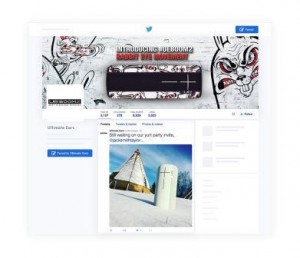With online revenues surging, what are the main drivers that every SMB retailer can leverage to ensure they win online?
Whilst online sales revenues are growing, it is also clear that consumer expectations have never been so high. Nowadays, we make few mental allowances between large and small retailers online, and the challenge is to ensure that your own business stays fully relevant and accessible for modern shopping habits. The good news is that studies show that Americans love buying from and supporting small, local retailers as long as they remain convenient. Below are four key drivers of online retail success right now, against which all retailers would be wise to benchmark their activities.
Key drivers for small retailer success
Omni-channel
Research has shown for a while that the strongest growing retailers are the ones that sell over both online and off-line channels. This combination helps consumers love to dip in and out of SMB retail depending on their circumstances and budgets.
The model works best when both ways of purchasing promote each other, drive awareness and footfall in both directions and essentially ‘give life to each other’
SMBs have the benefit that they are agile enough to experiment with omni-channel techniques (such as cross channel promotions) and can win rapid growth this way. Future solutions like ‘beacon tech’, essentially location-based phone alerts and discounts for shoppers, will be a great boost for small high street retailers.
Mobile
The importance of mobile search for shoppers has intensified for nearly every type of goods or service – even expensive items such as cars or new kitchens now start with a mobile search. This means that the visibility and accuracy of search results are now a big deal for every small retailer. Accurate local SEO and directory listings are critical for SMBs to compete with larger retailers and each other.
Story telling
We all love small retailers because it feels highly satisfying to buy goods that are perhaps a little special or niche, from an expert who is sharing a passion for their goods. Story-telling is the big differentiator in e-commerce – the reason why buying from / supporting an SMB can feel a more powerful experience than from a larger retailer.
For retailers, it is far easier to increase traffic than conversion – story telling is the most effective way to build a trust with your consumers that will reduce abandon rates on your website. Online consumers wish to buy from experts, passionate and attentive, and will pay more for the experience Social selling and reviews are instrumental and can mean SMBs achieve rapid growth through social referrals. Furthermore, ethical shopping is not just a fad – data shows it is a growing part of the retail landscape.
Marketplaces
Consumers in most markets are ‘hard-wired’ to value SMBs, however they need to see that there is easy access and relevance to their modern shopping habits, which for many includes marketplaces. These, such as Amazon Marketplaces, offer the best route to traffic, and the trust that shoppers have in familiar online portals. SMBs can use marketplaces to achieve volume effectively, however, it is essential to simultaneously develop your own brand and story or risk commoditization.
Ways to optimise an online store
E-commerce is getting super competitive. If a visitor comes to your online shop and does not like the experience, they will be just one click away from one of your competitors.
In short, getting the design elements right in your online shop plays a key part in keeping your customers on your website and encouraging them to buy. Appealing design, good-quality product images and user-friendly navigation: all these and many other factors can affect a user’s experience. Here are my quick fixes for increasing conversion:
Get design basics right
- Keep your content slider clean
A couple of years ago, having large header pictures at the top of every page was a standard look on many ecommerce websites. Today, this is considered a waste of space. Instead, present your top products using a content slider. Don’t overload it with graphical elements and text; keep it clean and ensure there is a clear call to action (CTA).
- Don’t use a welcome text
Welcome text at the top of your home page might seem like a nice way to engage with your customers and add a personal touch, but it takes away valuable space which you could use for prominently placing products or special offers.
Our recommendation is to skip the welcome text and add a call to action image or a special offer to lead your customers where you want them to go. If you want to have SEO-optimized text on your home page, place this at the bottom.
- Write individual and unique product descriptions
Often, shop owners settle for describing their products with one or two basic sentences or, even worse, by just copying the original product description of the manufacturer.
Not only does this negatively affect your Google ranking but it also sends the wrong message to your customers. Take time to write your own unique product descriptions that are easy to read and show your customers that you know your products well.
- Avoid using clichéd stock shots
Your website is the main face of your business but you don’t want to have the same appearance as your online competitors. So stay away from standard stock photos and try taking pictures of your own products.
Authenticity and personality are more important than ever. Show your customers what makes your shop unique. If you are not able to produce your own pictures, take some time to look for stock pictures that fit your shop perfectly.
Check your typography
Designers often say that the text makes up 90% of a website design. Whether or not that is true, textual aspects certainly contribute to the user experience. Apart from enhancing the actual content of the copy, it is also very important that we consider the visual impression made by the text.
Some typefaces are very generic and neutral, whereas others project a distinctive, individual style. Important issues here are the target audience and the branding. We recommend that you avoid using more than two different typefaces on your website. When selecting these you should aim to achieve a good level of contrast between the two styles. The text should be correctly formatted from a semantic point of view. Thinks to avoid include justifying or centering your body copy, underlining text (apart from in links), and using too many format styles together (such as bold and italic).
Colors for retail
In e-commerce, color has long been used by larger retailers in the science of selling – it’s a driver to gain attention, trust and support the purchasing decision – the skill is to balance the aspirational with the practical.
Firstly, select a sparing blend of appropriate colors, only two or three in total, that support a mood conducive to your market, brand and products. For example, greys and silvers evoke trust and sophistication, reds and pinks offer fun, youth or romance, blue is trustworthy and financial, and greens and browns suggest a connection to nature and well-being.
Think carefully about background color – bright white is not necessarily best – often, shadier whites or light greys are more comfortable to view. However, for clearly masculine or feminine target audiences or brightly colored or exciting products, explore darker backdrop options, such as black, pink or green, that will elevate them onto a stage. The isolation of color is also key – firstly, use an absence of color to draw attention to product USPs or prices, and also deploy one standalone color as a ‘trigger’ color on add-to-cart, check-out and live-chat buttons, that uses consistency and repetition to guide a shopper logically through your order and payment processes.
Managing color not only means your buttons, boxes or backgrounds, but also the colour of your images. In general, we advise merchants to use mood pictures of their products in order to place them in the right context and emotion. The products must always be the focus, so settings should be well lit, in greys or light colors to give products prominence. Of course, a customer must be able to recognize right away what your store is selling, and only if this is unimpeded, may color then be added into images to steer a wider emotional response.
Digital & Social Articles on Business 2 Community(12)






